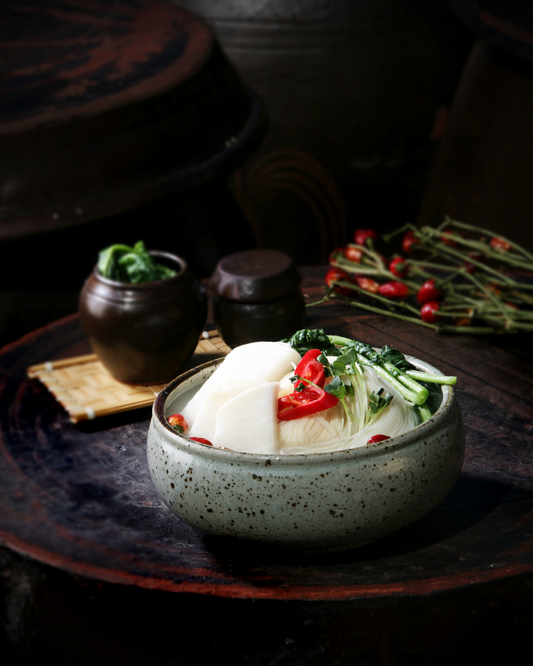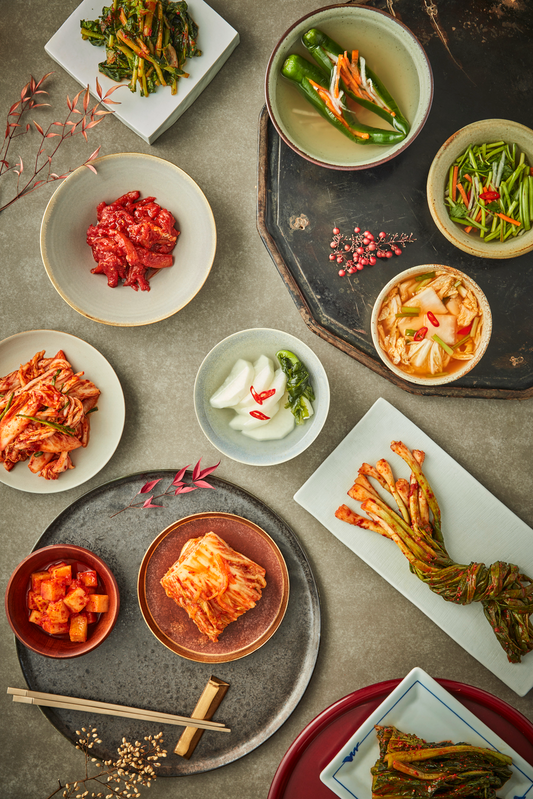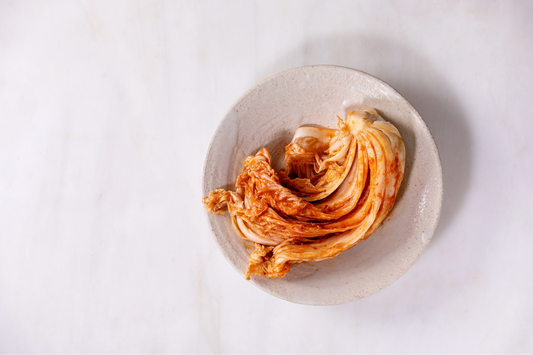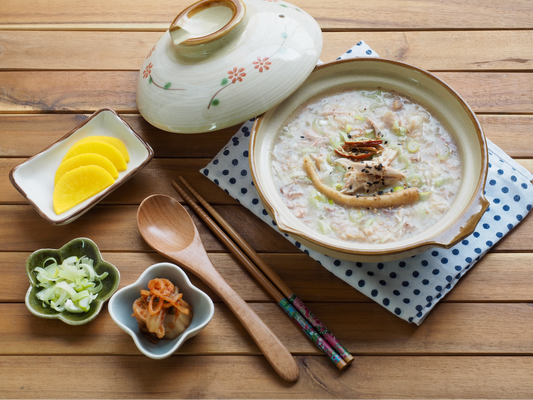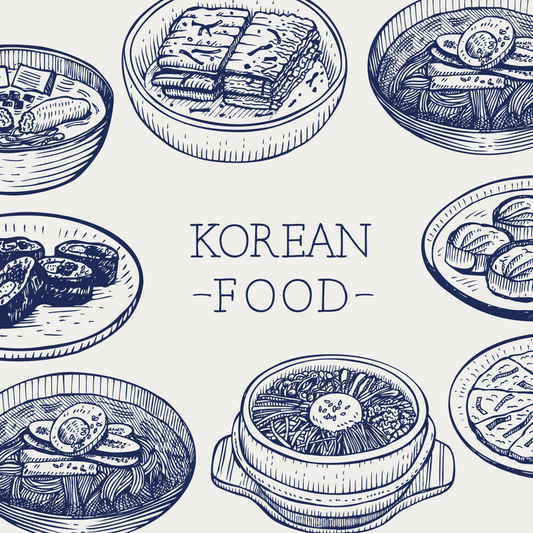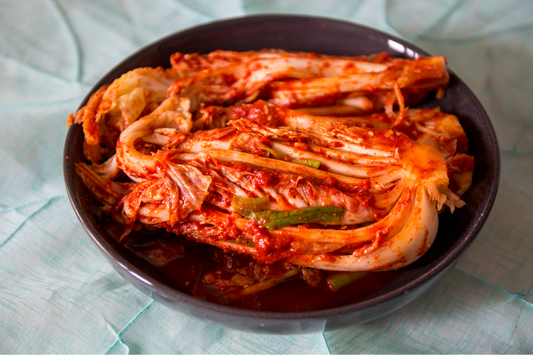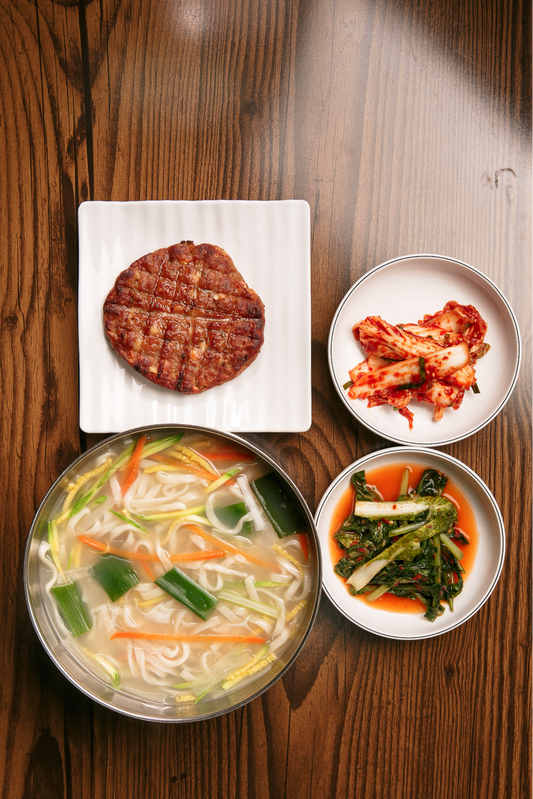Have you ever tasted the vibrant flavors of spring in one bite? The Bomdong Geotjeori recipe is Korea's way to enjoy the fresh produce of the season. First shown to the world on 04/05/2015 and updated for today's tastes on 01/29/2024, this dish makes the fresh bomdong a star on your dining table. Unlike its fermented relatives, spring kimchi is made for quick enjoyment. It's a fresh, crisp, and delicious way to bring health and flavor together.
Key Takeaways
- Learn to prepare bomdong geotjeori, a quick and delicious Korean spring kimchi, right in your own kitchen.
- Discover the unique qualities of fresh bomdong and other cabbages like putbaechu that anchor this dish.
- Understand the health benefits and cultural significance of this seasonal Korean delicacy.
- Get insights on customizing the bomdong geotjeori recipe to cater to your personal taste preferences.
- Uncover tips for achieving the perfect balance of flavors and ensuring a delectably crisp texture without the wait.
- Find out how to use kitchen gloves for even seasoning distribution in your spring kimchi preparation.

Definition of Bomdong Geotjeori
Bomdong geotjeori is a spring favorite in Korean food traditions. It's different from other Korean kimchi because it's made for eating right away. This dish uses young bomdong cabbage, making it crisp and mildly flavored compared to older kimchis.
Basic explanation of bomdong geotjeori
Bomdong geotjeori has a fresh, light taste. It's a type of kimchi that doesn't need to ferment. The young bomdong cabbage gives it a soft, sweet taste. This brings out the dish's overall freshness. Seasonings like gochugaru, fish sauce, garlic, ginger, and sugar add to its unique taste.
The difference between bomdong geotjeori and other types of kimchi
Bomdong geotjeori is different because it's eaten fresh, unlike other Korean kimchi. Most kimchis ferment for days to months, getting sour and flavorful. But bomdong geotjeori keeps its crunch and light spice. It celebrates spring's fleeting beauty.
Cultural background and unique features of bomdong geotjeori in Korea
During spring, bomdong geotjeori is special in Korean cuisine. It's not just tasty; it also marks a move to lighter foods from winter's fermented dishes. This shift is a cultural thing, too. It shows a love for seasonal changes and the fresh things they bring.
This dish is tied to the excitement of warmer days and nature's comeback. It's a valued tradition in Korean homes.
Also, bomdong benefits are big. It's full of vitamins and fiber but low in calories. The quick prep keeps the nutrients in, making it a favorite for those watching their health.
Every spring, bomdong geotjeori doesn't just offer the season's flavors. It also adds to Korea's rich food history, showing off tastes as lively as its culture.

Ingredients and Benefits
Making bomdong geotjeori, a Korean kimchi, includes many healthful ingredients. These not only add great flavor but also offer big health pluses. Key ingredients like fresh bomdong (small napa cabbage), sesame seeds, Korean chili powder, fish or anchovy sauce, garlic, sugar, rice vinegar, and soy sauce make the dish tasty and unique. Let's look at the health perks of the main items in this colorful dish.
Health Benefits of the Main Ingredients
The components of bomdong geotjeori are packed with vitamins, minerals, and active compounds. They're not just chosen for taste but for their health benefits, too. The star, fresh bomdong, offers lots of fiber that helps digestion and keeps the gut healthy. This cabbage, along with garlic, also helps boost the immune system.
Sesame seeds bring a nice nutty flavor and are full of calcium for strong bones. Korean chili powder isn't just spicy; it has elements that may help speed up metabolism which is good for weight control. Together, these ingredients make Korean kimchi not only tasty but also nutritious.
The fermentation process used in making kimchi increases good probiotics that aid in digestion. It may even make the immune system stronger, showing the overall health benefits of often eating bomdong geotjeori.
Bomdong geotjeori’s ingredients do more than make the dish delicious. They contribute to a balanced diet too. This makes it a valuable part of Korean food culture, recommended for anyone who wants to eat healthily while enjoying rich flavors.

Recipe
Starting the journey to perfect bomdong geotjeori recipe leads to the heart of traditional Korean food. It's all about the flavors in spring kimchi. This guide will show you every step, from picking ingredients to storing. So, your fresh bomdong will be a dish to remember.
List of Ingredients
To make bomdong geotjeori, you need top-notch ingredients. First, get a bomdong (a type of napa cabbage) that weighs around 6 pounds (2.7 kg). Then, you need ½ cup Kosher salt and other items for the complex taste:
- Porridge: 2 cups water, 2 tablespoons sweet rice flour, 2 tablespoons Turbinado sugar
- Vegetables: Korean radish and carrots in matchsticks (2 cups and 1 cup, respectively), 7 to 8 green onions. You can also add Asian chives and water dropwort if you like.
- Seasonings and spices: There's ½ cup minced garlic, 2 teaspoons minced ginger, a minced medium onion, ½ cup fish sauce, ¼ cup fermented salted shrimp, and 2 cups red pepper flakes
If you prefer vegan, mix ⅓ cup soy sauce with 1 to 2 tablespoons of doenjang or miso. It's a plant-based fish sauce replacement.
Cooking Process
First step in making bomdong geotjeori is to clean and cut the bomdong. Tear the big leaves by hand to keep their natural shape. This makes your spring kimchi look good. Then, cook the porridge with water, sweet rice flour, and sugar until it thickens. Let it cool before mixing it with spices, veggies, and seasonings to get a rich kimchi paste.
Next, layer this paste between cabbage leaves. Wrap the leaves into small bundles. This helps fermentation and boosts flavor.
Storage Method
After making your bomdong geotjeori, let it ferment. Keep it at room temperature for 2 to 3 days, then put in jars or pots for storage. Place them in the fridge. Kimchi can last from 2 to 3 weeks to up to 6 months. It depends on how sour you like it and your fridge settings.
Enjoy your homemade bomdong geotjeori. It's not just a side dish; it’s a fresh, lively addition to any meal. Embrace the homemade spring kimchi taste.

Tips and Cooking Methods
Exploring the many uses of bomdong geotjeori can change the way you cook, making simple meals stand out with its vibrant taste. As a traditional Korean side dish, this spring kimchi brings something special to the table. To keep its freshness and crunch, prepare it just before you eat. This helps the leaves stay perfect for you to enjoy their flavor fully.
Various Dishes and Ways to Use Bomdong Geotjeori
Try adding bomdong geotjeori to a salad for a light, tasty dressing. Mixing this spring kimchi into wraps or sandwiches adds crunch and spice that pairs well with any filling. Topping off a hot rice bowl with bomdong geotjeori for breakfast brings a pleasant sour touch. Sprinkle roasted sesame seeds on top for an extra layer of flavor.
Recommended Foods That Pair Well with Bomdong Geotjeori
Enjoy bomdong geotjeori with grilled or fried dishes to balance out their richness. This Korean kimchi complements the soft textures of stews and soups beautifully. For a creative twist, add bomdong geotjeori to fusion meals like kimchi quesadillas or tacos. It brings a unique Korean kimchi flavor to global favorites.
FAQ
What is Bomdong Geotjeori?
Bomdong Geotjeori is a kind of fresh, lightly-spiced Korean kimchi. It's made with a spring napa cabbage called bomdong. Unlike regular kimchi, it's eaten right away and not left to ferment. This gives it a crisp texture and a zesty taste. It adds a refreshing touch to meals.
How does Bomdong Geotjeori differ from other types of kimchi?
Bomdong Geotjeori is unique because it's consumed fresh, without fermentation. It stands out with its fresh, sweet taste. This contrasts with the longer fermentation process of traditional kimchi.
What is the cultural significance of Bomdong Geotjeori in Korea?
In Korea, Bomdong Geotjeori marks the arrival of spring. It's a celebrated delicacy that symbolizes new, fresh flavors. After a winter of eating fermented kimchi, it's a welcome change. It's enjoyed for its early spring cabbage.
What are some health benefits of main ingredients in Bomdong Geotjeori?
Bomdong Geotjeori's ingredients offer great health benefits. Cabbage is rich in fiber, aiding digestion. Garlic boosts the immune system, while sesame seeds boost bone health. Korean chili powder can kickstart your metabolism.
What are the necessary ingredients for making Bomdong Geotjeori?
To make Bomdong Geotjeori, you need fresh bomdong or small napa cabbage, sesame seeds, Korean chili powder, and fish or anchovy sauce. Also, minced garlic, sugar, rice vinegar, soy sauce, and sea salt are needed.
Can you describe the cooking process of Bomdong Geotjeori?
First, clean and tear the bomdong cabbage leaves by hand. Mix seasoning ingredients like Korean chili powder, fish sauce, garlic, sugar, and rice vinegar. Then, toss it with the cabbage. Finally, sprinkle with sesame seeds and let it sit a bit before serving. This lets the flavors blend together.
How should Bomdong Geotjeori be stored and for how long?
Keep leftover Bomdong Geotjeori in the fridge in an airtight container. It stays fresh for several days when stored this way.
What are various dishes and ways to enjoy Bomdong Geotjeori?
Bomdong Geotjeori works well as a banchan or a standalone salad with a light dressing. It's crunchy and fresh, making it a good complement to different dishes. It's also flexible with other Korean and international cuisines.
Are there any recommended foods that pair well with Bomdong Geotjeori?
Bomdong Geotjeori goes well with grilled meats, seafood, and rice bowls. It's also great with stews and soups, adding a crunchy, refreshing element.

